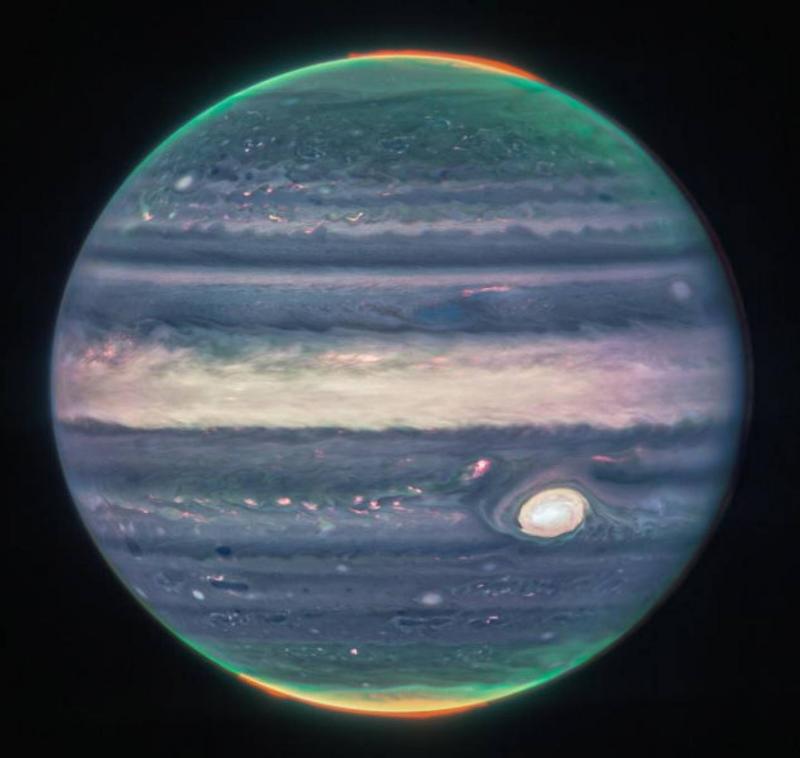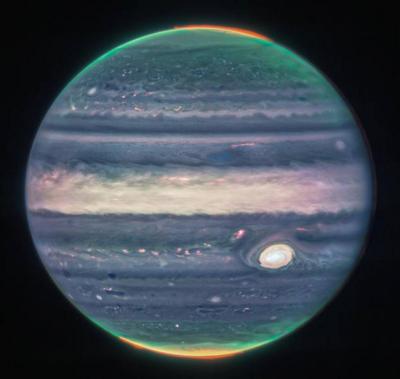As Halloween approaches, NASA released a new image of a strange-looking "face" on Jupiter. The photo was captured by the Juno spacecraft during its fifty-fourth close flyby of the gas giant last month. The probe images Jupiter's turbulent clouds, forming an unusually patterned appearance that creates a warped look resembling eyes, a nose, and a mouth.
The #JunoMission captured this view in Jupiter's far north that resembles a Cubist portrait displaying multiple perspectives. We present the @NASASolarSystem image to you on Oct. 25—what would have been Picasso's 142nd birthday.
This is not the first time Juno has produced such an image. The views it obtains of Jupiter's clouds while flying high over the largest planet in our solar system often lead to a phenomenon called "pareidolia," where the human mind seeks to interpret what the eyes see, creating false meanings. An example of this is the perception of faces in largely random patterns.
"Facial features" were noted by scientist Vladimir Tarasov, who observed the unusual shapes in Jupiter's stormy clouds. NASA stated that it resembles a Cubist image with "multiple perspectives of the face." Tarasov created the image using raw data from the spacecraft's JunoCam instrument, which captures the turbulent clouds and storms of the gas giant along the terminator line—the dividing line between the day and night sides of the planet.
At the time the initial image was captured, the Juno probe was approximately 7,700 kilometers above the tops of Jupiter's clouds. The Juno mission aims to study Jupiter's composition, evaluate its polar magnetic field, gravitational field, and magnetic field. Additionally, the mission monitors the gas giant's turbulent atmosphere, weather, and aspects of the planet's moons.




